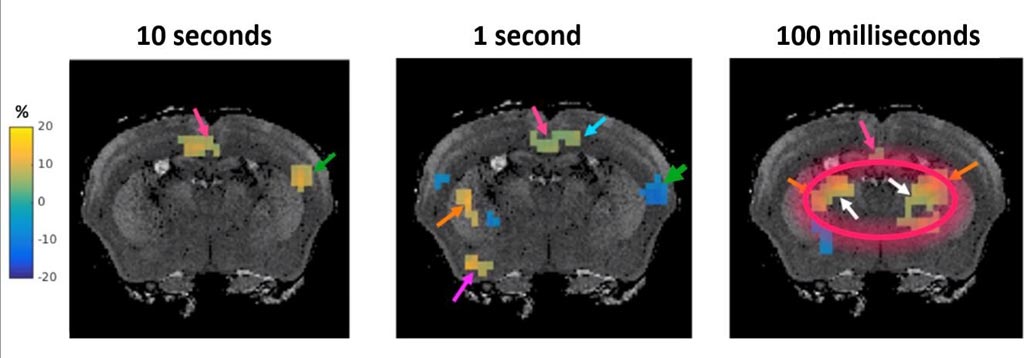New MRI Method Measures Brain Function in Milliseconds
By MedImaging International staff writers
Posted on 30 Apr 2019
A new study suggests that magnetic resonance elastography (MRE) could be used to observe neuronal activity in the human brain in fractions of a second.Posted on 30 Apr 2019
Developed by researchers at King’s College London (KCL; United Kingdom), Brigham and Women’s Hospital (BWH; Boston, MA, USA), Diderot University (Paris, France), and other institutions, the mathematical approach leverages elastography hardware to induce vibrations that are used to measure brain stiffness. The elastograms created from the raw data can help identify and study pathologies in which neuronal activity may be slowed, disrupted, our rerouted, such as in Alzheimer's disease (AD), dementia, multiple sclerosis, or epilepsy.

Image: Magnetic resonance elastography (MRE) can show millisecond brain activity (Photo courtesy of Science Advances).
Using MRE, the researchers succeeded in noninvasively quantifying brain biomechanics in the thalamus at 100-ms time scales. Brain stiffness changes of ~10% were observed in response to repetitive electric stimulation of a mouse hind paw over two orders of frequency, from 0.1 to 10 Hz; the regional patterns of stiffness modulation were synchronous with the stimulus switching, and evolved with frequency. As a result, the researchers claim that MRE could be used to visualize regional responses in the brain as they unfold at high speed. The study was published on April 17, 2019, in Science Advances.
“What excites me most is that this is an entirely new method, and I've always been intrigued by new science. The intriguing novelty of this approach is that the stiffening/softening of specific brain regions persists even when stimuli as short as 100 milliseconds are presented to the mouse,” said lead author Sam Patz, PhD, a physicist at BWH. “The data we are publishing was obtained in mice, but translation of this technology to humans is straightforward and initial studies are currently underway.”
MRE is a dynamic elasticity imaging technique that uses mechanical waves to quantitatively assess the shear modulus (or stiffness) of tissues. It can be considered to be an imaging-based counterpart to palpation, commonly used to diagnose and characterize diseases, as the mechanical properties of tissues are often dramatically affected by disease processes such as cancer, inflammation, and fibrosis. MRE obtains information about the stiffness of tissue by assessing the propagation of mechanical waves through the tissue using upgraded MRI scanners.
Related Links:
King’s College London
Brigham and Women’s Hospital
Diderot University














